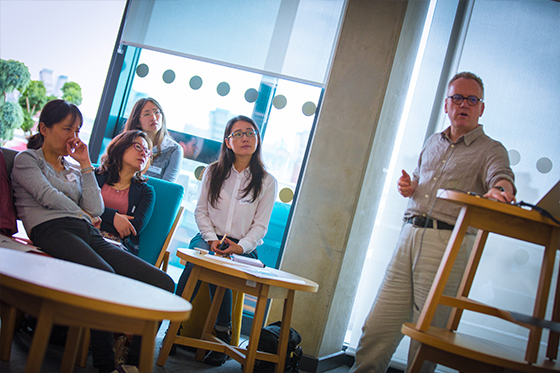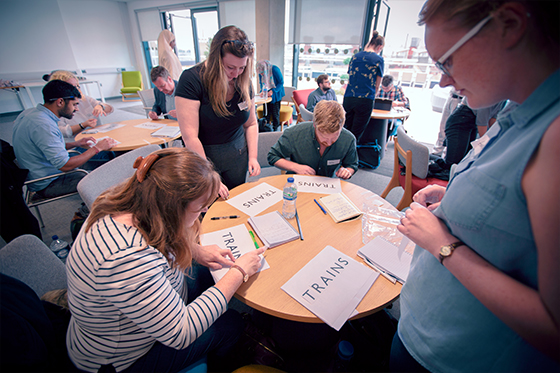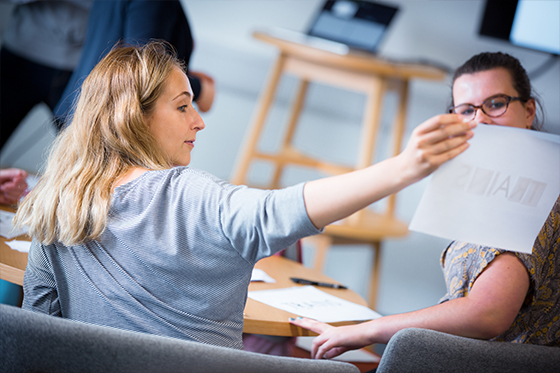The Leicester School of Architecture recently opened its doors to day one of the inaugural Leicester Urban Summer School, exploring how architecture, history, urban design and policy are contributing to the city’s regeneration.

Organised by the University of Leicester (UoL) on behalf of the Leicester Urban Observatory - a partnership between DMU, Leicester City Council, Loughborough University and UoL – the two day summer school aims to establish itself as a key annual event exploring urban issues.
DMU welcomed postgraduate students and members of the public to its landmark Vijay Patel building for an urban typography workshop led by Dr Robert Harland, a Lecturer in Visual Communication (Graphic Design) at Loughborough University.
Attendees had the chance to compare the ornate and decorative graphic detail found on older buildings in Leicester to the more vivid and dynamic styles which have emerged in modern times, as well as to complete a challenging typographic design exercise.
Dr Harland, said: “Much like buildings, words give cities their sense of identity. These details contribute to our experiences and memories of places.

“For example, one of my defining memories of Lisbon is the distinctive black and white cobbled street surface which incorporates words and designs.
“We’re living in a much more graphic society now, with temporary objects which come and go for commercial purposes, often dictating graphic design.”
Earlier in the day DMU’s Neil Stacey ran an architectural design workshop at UoL. The workshop challenged small groups to transform Leicester’s Soar Island into the ideal community.
RELATED NEWS
Discover Architecture at DMU's next Open Day
Award hat-trick for DMU Architecture graduate
Architecture at DMU revalidated by leading professional body
“People had to think about incorporating a whole range of elements, including housing, community spaces, workplaces and outdoor spaces,” said Mr Stacey.
“The challenge appeared to be simple, but very quickly revealed itself as complex.

“It was very interesting to hear people grapple with factors such as finance, aging population and heritage, and to see their creative ideas emerge – one group quickly developed ideas around floating housing as a means to preserve the island for the citizens of Leicester.”
The first day also included a session by Loretta Lees, Professor of Human Geography at the University of Leicester, during which complex ideas were unpicked and important questions raised about how Leicester might define multiculturalism going forward.
Grant Butterworth, Head of Planning at Leicester City Council, concluded the day with a workshop held in the newly refurbished Friars Mill.
The session asked attendees to role-play the position of the developer or that of the planner, with a lively debate ensuing during a ‘live’ review of the regeneration of the Leicester Waterside.
DMU’s Architectural Practice Postgraduate Diploma students have also benefitted from Mr Butterworth’s substantial planning experience during a two-hour lecture he delivered on campus earlier on this year.
Posted on Friday 14 July 2017